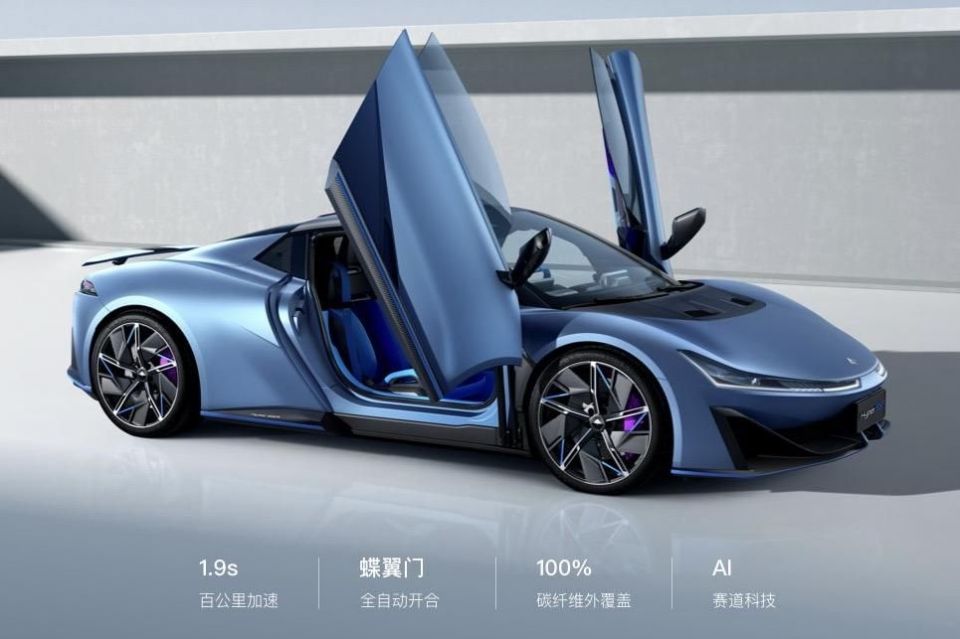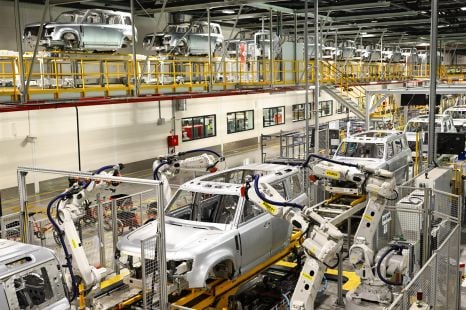

Max Davies
2026 Toyota Kluger review
3 Hours Ago
Aion's manic supercar is said to hit 100km/h from standstill in 1.9 seconds, with more info to trickle out across 2023.

Senior Road Tester


Senior Road Tester
In September 2022 we reported that Chinese brand Aion (part of GAC Group) had revealed the Hyper SSR electric supercar, boasting a wild 900kW of power and claiming a zero to 100km/h sprint time of just 1.9 seconds.
It’s pitched as China’s first supercar, and one that will set new benchmarks in terms of performance and manufacturing technology.
Now, the car-maker which builds more than 2.4 million cars per annum for the Chinese market alone, has released more eye-watering facts and figures on the Hyper SSR.

These should sound alarm bells for high-performance brands like Ferrari, Porsche, Lamborghini, and even Tesla – which is yet to produce its much anticipated second-generation Roadster.
Following internal performance testing in mid-December 2022, GAC’s Aion says its Hyper SSR EV rocket is slated to start rolling off the production line in October 2023.
Translating the source document, outright performance is claimed to surpass many V12 engines.

There is a world-first two-speed, ‘four-in-one’ ultra-high performance electric drive motor that develops a claimed head-spinning 12,000Nm of torque at the wheels (a different measure to the typical engine/motor torque read – Ed) with 1.7G of pull, in addition to 900kW of power.
At this stage, we’re told it uses a motor at each wheel, said to weigh less than 50kg a piece.
The electric motor power density is rated at 3.87kW/kg, while achieving a 94.5 per cent efficiency. It also has a maximum electric motor operating speed 22,000rpm, whereas the second-generation Tesla Roadster (if it ever gets built) was said to be specced at 21,000rpm.

The Hyper SSR’s electric motor uses a patented X-Pin design adapted from space technology and advanced materials for sounder structural integrity, according to the GAC Aion source material.
Although it operates a two-speed transmission (like the Porsche Taycan), the Hyper SSR boasts an eye-watering millisecond gear shift with zero claimed power loss between shifts.
The car operates on a 900V+ SiC (Wolfspeed Silicon Carbide) high-voltage electrical architecture adapted from high-speed rail, which offers 80 per cent lower power consumption and a 2.5x increase in frequency.

That’s what we know so far, but GAC Aion says it will release more specs across 2023. It’s definitely interesting and if it achieves all it says, the next-generation of EV performance is literally just around the corner.
It’s not the first Chinese hypercar to be discussed this year, either. Fledgling newcomer to the Australian market BYD, currently selling the popular Atto 3, recently revealed its Yangwang U9 electric coupe, which claims a 0-100km/h sprint of two seconds flat.
GAC Aion is yet to launch in Australia but is said to be looking at late 2023/2024 for its debut here, but like BYD with the U8 there are no firm plans in place to offer its Hyper SSR EV here.
Anthony Crawford is a CarExpert co-founder and senior presenter with 20+years in automotive journalism and content creation.


Max Davies
3 Hours Ago


Alborz Fallah
19 Hours Ago


Andrew Maclean
20 Hours Ago


Jack Quick
1 Day Ago


William Stopford
1 Day Ago


Ben Zachariah
2 Days Ago